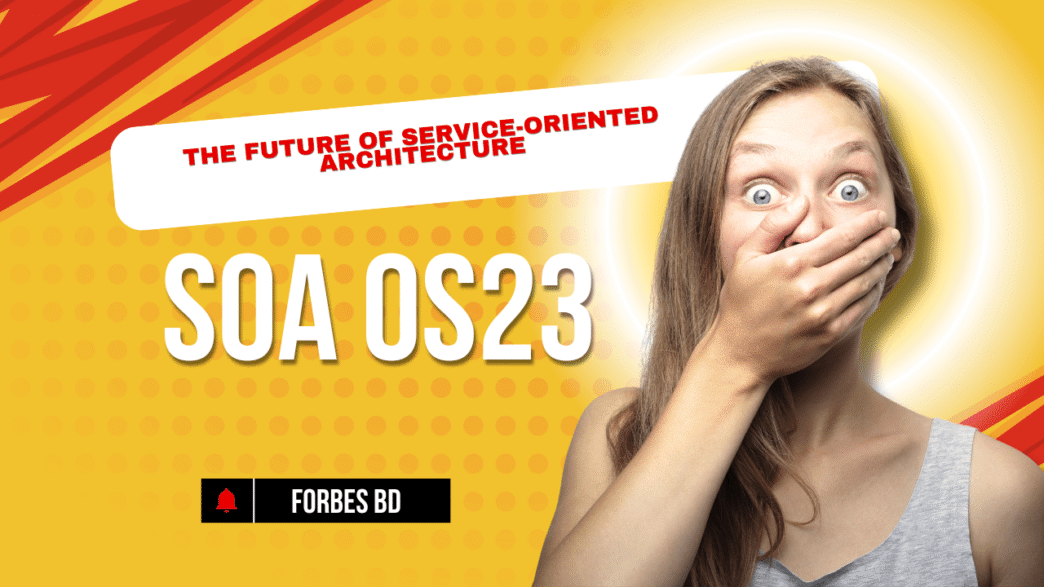In today’s fast-moving digital world, businesses, governments, and individuals rely heavily on technology to deliver faster, smarter, and more secure solutions. Every year, we see new frameworks and models that promise to revolutionize how systems interact, scale, and adapt to changing demands. One such emerging framework making waves is SOA OS23.
This next-generation model combines the principles of Service-Oriented Architecture (SOA) with the adaptability of modern operating systems, offering organizations a new way to achieve efficiency, scalability, and innovation. But what exactly is SOA OS23, why does it matter, and how can it transform industries across the globe? Let’s dive deep.
What is SOA OS23?
At its core, SOA OS23 is an advanced approach to digital architecture, designed to meet the growing demand for systems that are modular, scalable, secure, and automation-ready. Unlike traditional IT models that often struggle with integration and rigidity, SOA OS23 acts as a bridge between old frameworks and futuristic digital ecosystems.
The “OS23” aspect signifies its connection to next-generation operating system functionalities, where adaptability and real-time responsiveness are just as important as performance. In short, SOA OS23 combines the flexibility of cloud-native technologies with the structured principles of service-oriented design, making it a highly adaptable framework for enterprises.
Why SOA OS23 Matters in 2025 and Beyond
The digital ecosystem is expanding faster than ever. Businesses are expected to process massive amounts of data in real time, ensure top-notch security, and integrate multiple platforms and tools without delays. Traditional systems often fail to keep up, leading to inefficiencies and higher costs.
SOA OS23 addresses these pain points directly:
-
Agility – Adapt quickly to new technologies and customer demands.
-
Integration – Seamlessly connect diverse platforms and applications.
-
Security – Provide advanced defense against cyber threats.
-
Automation – Reduce manual effort and speed up workflows.
-
Scalability – Grow without performance drops.
For organizations aiming to stay ahead in today’s digital-first economy, SOA OS23 isn’t just a nice-to-have—it’s becoming a strategic necessity.
Key Features of SOA OS23
What sets SOA OS23 apart from older frameworks and even cloud-native solutions? Let’s look at its most defining features:
1. Modular Architecture
Systems built on SOA OS23 are highly modular, meaning components can be developed, deployed, and updated independently. This reduces downtime and enables faster innovation.
2. Extreme Scalability
As businesses grow, their systems need to handle more users, transactions, and data. SOA OS23 is built for scale, ensuring that performance remains smooth across multiple environments.
3. Security-First Approach
Cybersecurity is one of the biggest challenges in today’s digital economy. SOA OS23 incorporates advanced security layers, protecting sensitive data, transactions, and user interactions.
4. Seamless Integration
From ERP tools to AI-powered platforms, SOA OS23 enables smooth integration across ecosystems, minimizing technical barriers.
5. Automation Ready
By supporting workflow automation, SOA OS23 reduces reliance on manual operations and optimizes efficiency.
Business Applications of SOA OS23
SOA OS23 is not just a theoretical model—it’s already finding real-world applications across multiple industries.
-
Healthcare – Enables real-time sharing of patient records, lab results, and monitoring systems, leading to better care.
-
Finance – Streamlines transactions, reduces errors, and enhances fraud detection with automation and secure workflows.
-
Logistics & Transportation – Optimizes route planning, fleet management, and real-time tracking.
-
Retail – Synchronizes physical stores with e-commerce platforms for better inventory control.
-
Telecommunications – Improves large-scale connectivity and customer service platforms.
These use cases show that SOA OS23 is a versatile model that adapts to the specific needs of industries where speed, accuracy, and integration are critical.
SOA OS23 vs. Traditional Systems
Here’s how SOA OS23 compares to older IT frameworks:
| Feature / Aspect | Traditional Systems | SOA OS23 |
|---|---|---|
| Scalability | Limited | High |
| Security | Basic | Advanced |
| Integration | Complex | Seamless |
| Performance | Average | Optimized |
| Flexibility | Rigid | Adaptive |
| Automation | Minimal | Strong |
This comparison makes it clear: SOA OS23 is designed for modern needs, while traditional systems struggle to keep up.
SOA OS23 and Cloud-Native Solutions
Although cloud-native technologies have revolutionized IT, SOA OS23 takes things further by combining cloud agility with structured service-orientation.
| Aspect | Cloud-Native | SOA OS23 |
|---|---|---|
| Deployment Speed | Fast | Fast but structured |
| Resource Utilization | Optimized | Highly optimized |
| Integration | Moderate | Extensive |
| Security Focus | Varies | Advanced |
| Adaptability | High | Higher |
This means organizations don’t have to choose between speed and structure—SOA OS23 delivers both.
Advantages of SOA OS23
Adopting SOA OS23 provides organizations with multiple benefits:
-
Efficiency Gains – Streamlined workflows reduce delays.
-
Future-Proofing – Built with AI, blockchain, and automation in mind.
-
Cost Reduction – Optimized resource use reduces long-term expenses.
-
Smarter Decisions – Real-time insights empower better planning.
Challenges of Implementing SOA OS23
Like any major digital shift, adopting SOA OS23 comes with challenges:
-
High Initial Costs – Requires investment in infrastructure.
-
Skill Gaps – Teams must learn new frameworks and tools.
-
Transition Period – Migration from traditional systems may cause temporary disruption.
However, the long-term gains often outweigh these short-term hurdles.
SOA OS23 and Digital Transformation
Digital transformation isn’t just about adopting new tools—it’s about reimagining business operations. SOA OS23 aligns perfectly with transformation goals by enabling seamless system integration, customer-centric services, and faster innovation.
Forward-looking companies are placing SOA OS23 at the center of their strategies to maintain competitiveness in an AI-driven, data-heavy future.
Future Outlook of SOA OS23
Experts predict that SOA OS23 will become a standard framework in enterprise systems within the next decade. Its adaptability makes it ideal for integrating with AI, machine learning, blockchain, and IoT.
As industries demand faster innovation cycles and greater flexibility, SOA OS23 will serve as the foundational layer of digital ecosystems worldwide.
SOA OS23 in Education and Research
Academic institutions and researchers are also exploring SOA OS23. From computer science to business schools, studies are examining how it can transform industries, reduce costs, and improve efficiency. Students specializing in IT architecture, digital transformation, and enterprise systems are likely to see SOA OS23 as a core study area in the years ahead.
Frequently Asked Questions (FAQs) about SOA OS23
1. What does SOA OS23 stand for?
SOA OS23 stands for Service-Oriented Architecture with next-generation operating system elements (23), representing a modern evolution of SOA frameworks.
2. How is SOA OS23 different from traditional SOA?
While traditional SOA focuses mainly on modularity, SOA OS23 integrates scalability, automation, and advanced security for real-world business demands.
3. Is SOA OS23 only for large enterprises?
Not at all. While large companies benefit the most, mid-sized and small organizations can also adopt SOA OS23 to improve agility and integration.
4. What industries can benefit the most?
Industries like finance, healthcare, logistics, telecom, and retail are already seeing major improvements from SOA OS23 adoption.
5. What are the biggest challenges in adopting SOA OS23?
The main challenges include initial costs, skill requirements, and migration hurdles—but the long-term benefits typically outweigh these concerns.
6. How does SOA OS23 connect with AI and blockchain?
SOA OS23 acts as the connective framework, making it easier to integrate emerging technologies like AI-powered automation and blockchain-based security into business operations.
Final Thoughts
The arrival of SOA OS23 marks a major shift in the evolution of digital frameworks. By prioritizing scalability, integration, and adaptability, it solves many of the limitations of traditional systems while preparing organizations for the future of automation, AI, and digital transformation.
Though challenges exist in terms of cost and skill requirements, the long-term payoff is substantial. Businesses that adopt SOA OS23 early will not only stay ahead of competitors but also position themselves as pioneers in the next wave of digital innovation.













